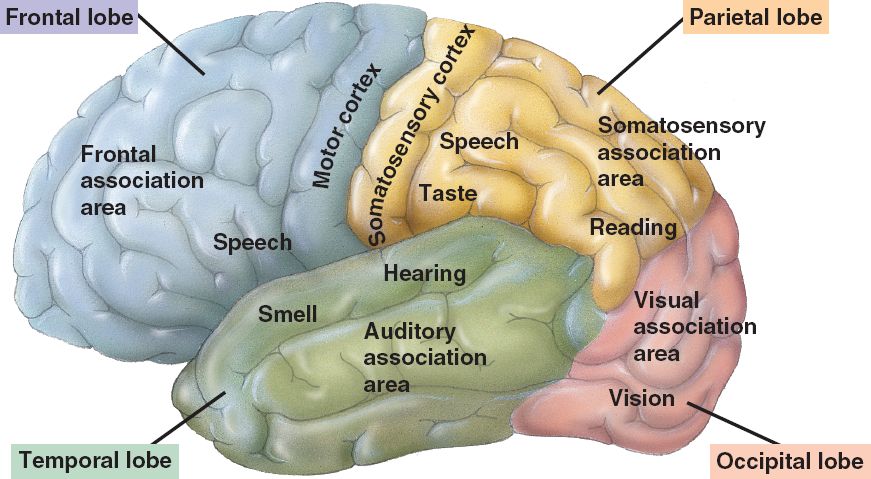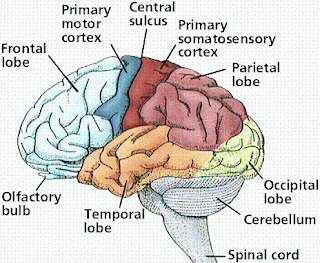Research shows, a lack of minerals and vitamins that are important to the brain can reduce mental alertness of the brain. A diet rich in fruits and vegetables, whole grains, combined with meat and fish to provide for major minerals and vitamins needed for physical and mental health.
What are some foods that can stimulate the growth of brain cells, improve function, improve memory and concentration and thinking of children? Here are 10 foods recommended by Dr. Saridian Satrix W, SpGK:
 |
| Salmon |
1. Salmon
Salmon is the best source of omega 3-fatty acids DHA and EPA, which are both essential for growth and development of brain function. The new research also showed that people who earn more fatty acid intake has a sharper mind and recorded satisfactory results in testing capabilities. Omega-3 fatty acid content per 100 grams of fish for salmon is 2.2 grams. Needs of children in omega 3 per day is 1.2 grams.
 |
| Eggs |
2. Eggs
Eggs are known as an important source of protein which is relatively cheap and the price is quite affordable. Egg yolk was solid part will contain choline, a substance that can help the development of memory or memory. The content of choline in 1 large egg is 126 mg. Compare with 2 tablespoons of peanut butter that contains only 20 mg and 300 grams of beef degan content of 66 mg choline. Needs of children will be 200-375 mg per day of choline
 |
| Peanut butter |
3. Peanut butter
Groundnut (peanut) that many processed into peanut butter is one source of vitamin E. This vitamin is a source of antioxidants that can protect nerve cell membranes. Together with thiamin, vitamin E helps the brain and nervous system in use glucose for energy needs. Every 2 tablespoons of peanut butter contains 2.9 mg of vitamin E, while the needs of children between 4-10 mg per day.
 |
| Mixed nuts |
4. Other Nuts
Peanut is a special food because these foods have the energy derived from protein and complex carbohydrates. In addition, nuts are rich in fiber, vitamins, and minerals. Nuts are also good food for the brain because they can maintain the energy and thinking ability of children at its peak in the afternoon if consumed when maakn afternoon. According to the research, red beans and pinto beans contain more omega-3 fatty acids than other nuts, especially ALA, omega-3 type of origin are important for growth and brain function.
 |
| Grains |
5. Whole grains
The brain requires glucose supply or preparation of the body that are constant. Whole grains have the ability to support those needs. Fiber contained in whole grains may help regulate the release of glucose in the body. Wheat also contains vitamin B which serves to maintain nervous system health. Wheat contains vitamin B, 1.5 mg per 100 grams. While the requirement of vitamin B in children is 1 mg per day.
 |
| Oatmeal |
6. Oatmeal
Oatmeal is one of the most popular types of cereals among children and rich in essential nutrients for the brain. Oatmeal can provide the energy or fuel for the brain a much needed children's activities started in the morning. Rich in fiber, oatmeal will keep your child's brain needs are met throughout the morning. Oatmeal is also a source of vitamin E, vitamin B, potassium, d of zinc which makes the body and brain to function at full capacity. The content of vitamin E in 250 grams of oatmeal is 0.08 mg. The content of vitamin B 0.26 mg per 250 grams of oatmeal and zinc 6.19 mg per 250 grams of oatmeal.
 |
| Berries |
7. Berries
Family groups berries (strawberries, cherries, blueberries), the stronger the color the more nutrients they contain. Give contain high levels of antioxidants, especially vitamin C, which is useful to prevent cancer. Some research suggests those who get the extracts of blueberries and strawberries experienced improvements in the functioning of his memory. Seeds from these berries was also rich in omega-3 fatty acids.
 |
| Vegetable |
8. Colorful vegetables
Tomatoes, red sweet potato, pumpkin, carrots, and spinach are the vegetables that are rich sources of nutrients and antioxidants that will keep brain cells strong and healthy.
 |
| Milk |
9. Milk and yoghurt
Foods derived from dairy products containing high protein and B vitamins. Two types of nutrients are essential for the growth of brain tissue, neurotransmitters, and enzymes. Milk and yogurt also can make a full stomach because the content of protein and carbohydrate as well as a source of energy for the brain.
 |
| Lean beef |
10. Lean beef
Iron is an essential mineral that helps the children stay energized and concentrate at school. Lean beef is one source of foods high in iron. The content of iron in 100 grams of beef is 4.05 mg. While the need for iron in children is 30-10 mg per day.
---THE END---
don't forget to comment and follow me ! :D
source : DETIK HEALTH
Read More......





















